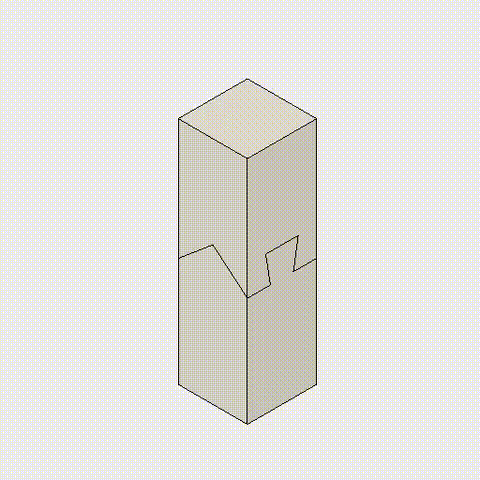
Traditional Japanese carpentry, whether used to build a dinner table or the entire house containing it, doesn’t use screws, nails, adhesives, or any other kind of non-wooden fastener. So how do its constructions hold together? How have all those thousands of wooden houses, tables, and countless other objects and structures stood up for dozens and even hundreds of years, and so solidly at that? The secret lies in the art of joinery and its elaborate cutting techniques refined, since its origin in the seventh century, through generations and generations of steadily increasing mastery — albeit by a steadily dwindling number of masters.
河合継手 Kawai-tsugite pic.twitter.com/WQwxeZ7t4M
— The Joinery (@TheJoinery_jp) May 17, 2016
“Even until recent times when carpentry books began to be published, mastery of these woodworking techniques remained the fiercely guarded secret of family carpentry guilds,” writes Spoon & Tamago’s Johnny Strategy. If you find it difficult to grasp how simply cutting two pieces of wood in a certain way could unite them as if they’d grown together in the first place, have a look at a Twitter feed called The Joinery, run by a young enthusiast who has collected a great many of these carpentry books. He’s used them, in combination with mechanical design software skills presumably honed in his career in the auto industry, to create elegantly animated visual explanations of Japanese carpentry’s tried-and-true joinery methods.
三方組仕口 Sampo-gumi-shikuchi pic.twitter.com/OdgpaTBvcs
— The Joinery (@TheJoinery_jp) May 3, 2016
Archdaily points to the work of architect Shigeru Ban as one example of how this “uniquely Japanese wood aesthetic” has survived into the modern day, but the man behind The Joinery imagines even more ambitious possibilities: “3D printing and woodworking machinery has enabled us to create complicated forms fairly easily,” he tells Spoon & Tamago. “I want to organize all the joinery techniques and create a catalog of them all,” so that anyone with the tools might potentially make use of their beauty and sturdiness in hitherto unimagined new contexts. And so another traditional Japanese craft that has looked doomed to outmoded oblivion, what with all the more advanced and efficient fabrication and construction techniques developed over the past 1400 years, may well thrive in the future. To learn more about the art of joinery, you’ll want to explore this 1995 book, The Complete Japanese Joinery.
梨くずしの逆組み継ぎ Nashi-kuzushi-no-gyaku-kumitsugi pic.twitter.com/5T2EG0VGHm
— The Joinery (@TheJoinery_jp) January 4, 2017
Related Content:
20 Mesmerizing Videos of Japanese Artisans Creating Traditional Handicrafts
The Making of Japanese Handmade Paper: A Short Film Documents an 800-Year-Old Tradition
Watch a Japanese Craftsman Lovingly Bring a Tattered Old Book Back to Near Mint Condition
Japanese Craftsman Spends His Life Trying to Recreate a Thousand-Year-Old Sword
Based in Seoul, Colin Marshall writes and broadcasts on cities and culture. He’s at work on a book about Los Angeles, A Los Angeles Primer, the video series The City in Cinema, the crowdfunded journalism project Where Is the City of the Future?, and the Los Angeles Review of Books’ Korea Blog. Follow him on Twitter at @colinmarshall or on Facebook.


Please send me information & prices. Thank you
Ingenious! However, there’s one mistake in third GIF showing three beam join — Sampo-gumi-shikuchi. Top left beam needs another undercut half way through, otherwise it will not fit into bottom left one.